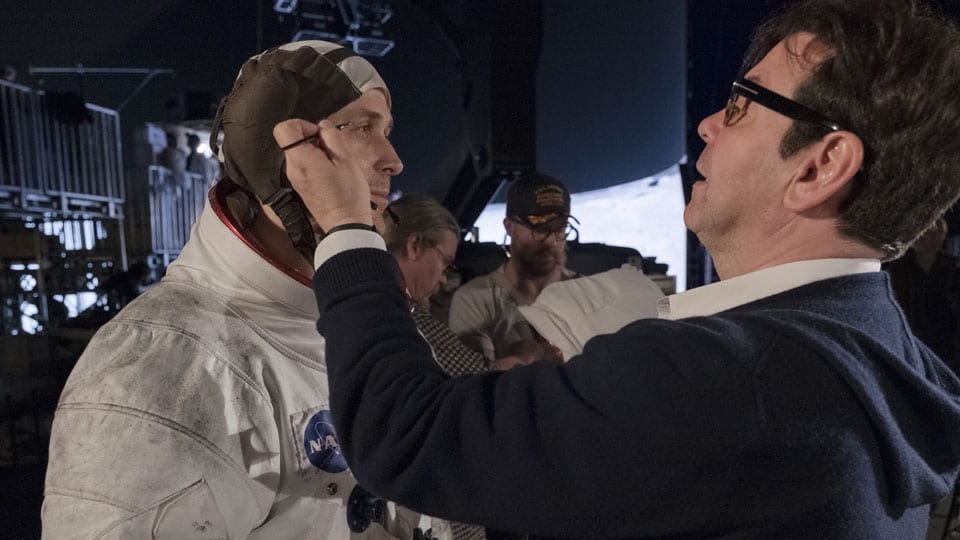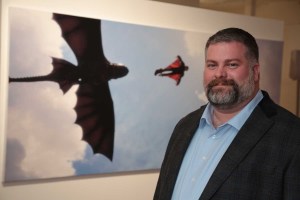
As is more or less received wisdom in the creative industries, second acts are difficult. It’s therefore fortuitous that How to Train Your Dragon 2 director, Dean DeBlois, as well as directing and writing credits including Mulan and Lilo and Stitch, also co-directed the original How To Train Your Dragon with Chris Sanders.
“I wanted to be a comic book artist in my teens,” DeBlois revealed. “I loved the idea of making a world and making characters and drawing it in precisely the way I saw it. But the reality of becoming a comic book artist and working for DC or Marvel seemed unreachable.” Still, art would be key to DeBlois’ early progression. “I identified the job that I wanted, which was directing, but the means to get there was storyboarding.” Via college courses in his native Canada and a stint in Ireland at the now-defunct Sullivan Bluth Studios, DeBlois was able to get his first job at Disney, working on Mulan. “The story department has to be the proving ground for directors,” DeBlois said. In the interim, DeBlois wrote screenplays on his own time, with Lilo and Stitch to become his first writing credit.
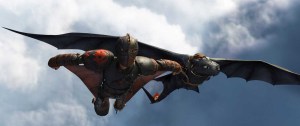
Involvement in How To Train Your Dragon came via Sanders, his co-director on Lilo and Stitch. “Chris had been developing The Croods before How To Train Your Dragon,” explained DeBlois. “I joined them for that project. As we were wrapping it up he went back to The Croods, which left me in a solo position to write and direct the sequel.” Careful to avoid the second-album problem, DeBlois “pitched the idea of rather than doing a sequel that seemed aimless, to do something that beckoned a three-part story.” This concept was received warmly by a group that he refers to as “the holy trinity of Dreamworks Animation” – CEO Jeffery Katzenberg, chief creative officer Bill Damaschke and president Ann Daly. “They bought into three parts from the pitch – there were discussions about how things affect the third film,” DeBlois said. “They all offer notes with great perspective.”
Preproduction was mainly a writing task for DeBlois, who shares the writing credit with Cressida Cowell, author of the How to Train Your Dragon book series on which the films are based. “Cressida became crucial to my process,” DeBlois said. “When we were nominated for a BAFTA, I spent time with her in London. She understood that we were pursuing our own take, but when it comes to characters like Stoick or Hiccup she has a sense of when they’re veering off character. Fans of the books are acutely aware of the differences.”
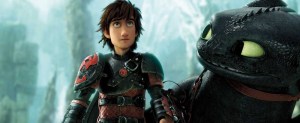 He said that, as a writer, preparation is key. “Having worked on Mulan at Disney, and on Lilo and Stitch, writing with Chris, I found the more we did upfront, the more we did to work out a story, the better off we were.” Given the considerable staffing required to produce feature animation, this made production more efficient. “It’s good that I spend four or five months going through a draft of the script before I engage the team. Then all the work is going on the screen, rather than having a massive team assembled beforehand.”
He said that, as a writer, preparation is key. “Having worked on Mulan at Disney, and on Lilo and Stitch, writing with Chris, I found the more we did upfront, the more we did to work out a story, the better off we were.” Given the considerable staffing required to produce feature animation, this made production more efficient. “It’s good that I spend four or five months going through a draft of the script before I engage the team. Then all the work is going on the screen, rather than having a massive team assembled beforehand.”
“Locking it down is the goal,” said DeBlois of the storyboards assembled by editor John Carr. “We edit the film first. They may be static images, but they’re very telling. Our storyboards are very expressive, showing a lot of action, a lot of movement. Before we spend a dime animating shots we want to make sure they work in the film. If you close your eyes it’s a full radio play, it’s got effects and dialog and music.”
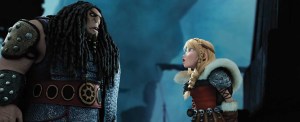 The look of the film naturally derives from its prequel, with renowned British director of photography Roger Deakins, ASC, BSC once again brought on to supervise the film’s cinematography. The realistic, often overcast look, “came from a very early discussion with Roger and visual effects supervisor Dave Walvoord and with production designer Pierre-Olivier Vincent,” DeBlois explained. “We talked a lot about the atmosphere, to make it suggestive and naturalistic. One of the reasons we approached Roger on the first film, and re-engaged him, is that he’s about natural light, and he’s about reusing light.” The infinite possibilities of CGI benefited from this approach. “Because you have every light available to you, it became a discipline for us.” The naturalistic approach extended to a research trip to Svalbard, a Norwegian archipelago in the Arctic ocean. “We went on a safari through polar bear country just capturing the light. The way the light filters through has an ethereal quality that we wanted to capture.”
The look of the film naturally derives from its prequel, with renowned British director of photography Roger Deakins, ASC, BSC once again brought on to supervise the film’s cinematography. The realistic, often overcast look, “came from a very early discussion with Roger and visual effects supervisor Dave Walvoord and with production designer Pierre-Olivier Vincent,” DeBlois explained. “We talked a lot about the atmosphere, to make it suggestive and naturalistic. One of the reasons we approached Roger on the first film, and re-engaged him, is that he’s about natural light, and he’s about reusing light.” The infinite possibilities of CGI benefited from this approach. “Because you have every light available to you, it became a discipline for us.” The naturalistic approach extended to a research trip to Svalbard, a Norwegian archipelago in the Arctic ocean. “We went on a safari through polar bear country just capturing the light. The way the light filters through has an ethereal quality that we wanted to capture.”
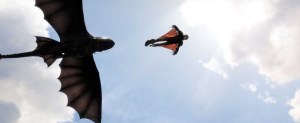 These lofty goals placed a heavy burden on DreamWorks’ technical capability, recently expanded by a comprehensive software upgrade that the company calls Apollo. The animation component of Apollo is named Premo, presumably a play on the Emo tool which originated at Pacific Data Images, which DreamWorks bought in the ’80s and was used, much upgraded, until recently. Premo permits animators to work directly on a display with a stylus, pushing a character’s features around in a way that’s much more intuitive and direct than previous approaches. This, said DeBlois, allowed the film to feature richer and more detailed background animation than would otherwise have been the case. “Animators are able to turn around their work faster, I get to see it sooner and we can talk about the other details in the shot that are not storytelling but are charming and make for good repeat viewing.” Apollo’s lighting component, named Torch, facilitated a similar approach to lighting. “Roger could sit with our VFX supervisor and design lighting schemes. Every one of our lighters could use that as a default.”
These lofty goals placed a heavy burden on DreamWorks’ technical capability, recently expanded by a comprehensive software upgrade that the company calls Apollo. The animation component of Apollo is named Premo, presumably a play on the Emo tool which originated at Pacific Data Images, which DreamWorks bought in the ’80s and was used, much upgraded, until recently. Premo permits animators to work directly on a display with a stylus, pushing a character’s features around in a way that’s much more intuitive and direct than previous approaches. This, said DeBlois, allowed the film to feature richer and more detailed background animation than would otherwise have been the case. “Animators are able to turn around their work faster, I get to see it sooner and we can talk about the other details in the shot that are not storytelling but are charming and make for good repeat viewing.” Apollo’s lighting component, named Torch, facilitated a similar approach to lighting. “Roger could sit with our VFX supervisor and design lighting schemes. Every one of our lighters could use that as a default.”
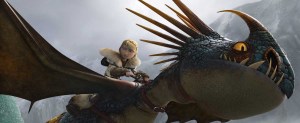 “With writing and directing, the writing was consuming a lot of my time,” remembered DeBlois. “From the start I empowered my department heads to raise dominion over their work, so they could make creative decisions and I would support them wholeheartedly.” With head of character animation Simon Otto charged with overseeing a large team of animators and producer Bonnie Arnold managing any of the difficulties, the production process was highly iterative. “We have a lot of internal screenings of our storyboard animatics,” DeBlois said. “We drop in shots that take the place of storyboards. It’s a constantly evolving piece of work. Every two months we’ll sit down as a group and watch the film and inevitably there are notes, so it is a constant process. In the last year, we’ll recruit an audience.”
“With writing and directing, the writing was consuming a lot of my time,” remembered DeBlois. “From the start I empowered my department heads to raise dominion over their work, so they could make creative decisions and I would support them wholeheartedly.” With head of character animation Simon Otto charged with overseeing a large team of animators and producer Bonnie Arnold managing any of the difficulties, the production process was highly iterative. “We have a lot of internal screenings of our storyboard animatics,” DeBlois said. “We drop in shots that take the place of storyboards. It’s a constantly evolving piece of work. Every two months we’ll sit down as a group and watch the film and inevitably there are notes, so it is a constant process. In the last year, we’ll recruit an audience.”
With the second installment of How To Train Your Dragon already a sizable success, DeBlois is currently “in the process of tuning up the first draft” of a third film. “There will be time to do a rewrite or two before we engage the storyboard team.” He remains bullish about the challenges of this particular kind of serial drama. “There’s a great benefit to working on a sequel and it’s paired with an equal responsibility to the audience to not disappoint. We became aware how vocal and fervent our fanbase was after the first film.” For DreamWorks, he said, “How To Train Your Dragon was quite a different tone from what they had done, and having that in place dictated certain tones of our sequel. There was a lot of excitement about creating a look that is rarely seen in animation.”
Ultimately, DeBlois has “ambitions toward live action. As I complete the How To Train Your Dragon trilogy, I hope I’ll be able to transition to live action, to make good on my aspirations, stories that I’ve written that I want to see to come to fruition.”





